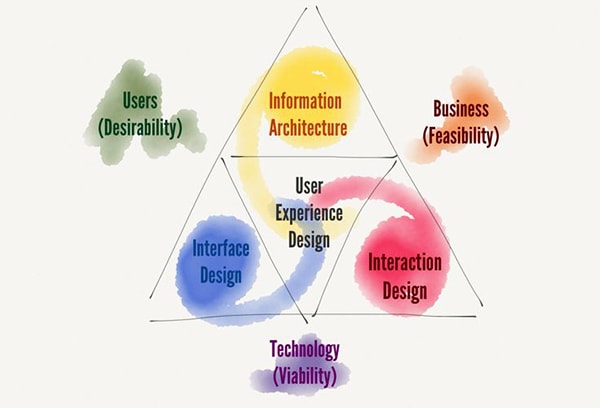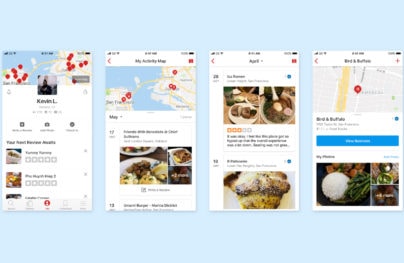UX and Content Strategy: How They Are Related and Why You Should Care
What is more important: User experience or content?
I hate this type of question and to me they don’t make sense. It’s like asking a kid who he loves more — mom or dad. Or even worse, trying to figure out which came first — the chicken or the egg? But unlike the age old causality dilemma, this question has an answer.
In recent years, developers and product owners got so carried away by user experience design as an ultimate solution for pretty much any problem that the actual content of the product played second fiddle. This approach may be successful in the short term but if you are aiming for something greater, focusing only on user experience is not a way to go.
Content is king. As bookish and outdated as it sounds, content is still king in 2014. Sure, things have changed drastically and now we can’t survive relying only on valuable content creation and distribution, we also have to work hard on things like web usability, interaction design, information architecture and so on. But none of those is going to build a successful business, if we do not have amazing content to power the overall user experience.
What is Content Strategy?

While there are many definitions, I would describe content strategy as a long term plan of creating, delivering and maintaining useful and valuable content for the users of your product, aka target audience.
With Postcards Email Builder you can create and edit email templates online without any coding skills! Includes more than 100 components to help you create custom emails templates faster than ever before.
Free Email BuilderFree Email TemplatesAs Kristina Halvorson further explains it in her book “Content Strategy for the Web”: “It plots an achievable roadmap for individuals and organizations to create and maintain content that audiences will actually care about.”
It is a relatively new discipline and there is plenty of debates on whether there is a need for the title of content strategist at all, but just like any other profession, it takes time to fully outline the key responsibilities and benefits of having one. Content strategy creates a framework or a guidance for copywriters and content curators defining the main themes and topics, messaging priorities, content length based on its purpose and target audience characteristics. Content strategy makes it clear who is the message for, what we are trying to achieve and how we can effectively articulate that in our content.
Having a plan that creates a bridge between user needs and business goals is essential, not only from the content perspective but also for the UX and design team. As any other strategy, it gives a clear vision of what we need to achieve (the type of content that relates to the users and satisfies their needs) and how exactly we can get there (by understanding the users and creating quality content).
What Exactly is User Experience?
User experience is basically everything that users feel or think while interacting with a product, which doesn’t necessarily need to be a digital one. User experience is a broad category, which encompasses every aspect of the product from as small as button design and caption up to navigation, information architecture or an e-commerce checkout process. It should be present in almost every stage of product development to create a really smooth and seamless experience for the target audience.
UX gurus Nielsen and Norman stated it best: “In order to achieve high-quality user experience in a company’s offerings there must be a seamless merging of the services of multiple disciplines, including engineering, marketing, graphical and industrial design, and interface design.”
But above all this, user experience is the voice of the end user.

With Startup App and Slides App you can build unlimited websites using the online website editor which includes ready-made designed and coded elements, templates and themes.
Try Startup App Try Slides AppOther ProductsNot long ago, before UX and related disciplines were on the rise, websites and other digital products were designed considering the taste and opinion of the client and based on the imagination and skills of the web designer. We used to design the way we thought was cool and the more extraordinary solutions were created the better. Partially, the reason for such approach was that at first the web was more of a “seller’s market” and users had to consume whatever was offered. But as the web evolved and competition intensified, web developers had to change their strategy for a more user-centered design putting the focus on the user needs and expectations.
Making Content Strategy and UX Work Together
Though user experience and content strategy seem to have similar goals there is too much conflict when it comes to the actual execution. There are often battles between UX and content management teams, especially when it comes to design process. Content strategists and SEO specialists tend to add as much keyword optimized content to webpages as possible, while designers have a hard time fitting that 400-500 word content into the page without impacting the design.
Sometimes even two extra words can distort a design and changing the wording for the sake of design may ruin the desired effect of the message as whole. So it is essential to have these teams collaborate to get projects done.
But the good news is that when user experience and content strategy work together, the synergistic effect is much greater than simply resolving conflict. Combining the expertise, skills and mindsets of usability professionals, creative designers, content curators and strategists will not only solve existing problems but will improve the overall communication between them. Ideally, such brainstorming sessions will help create a clear vision of the product both from UX and content perspective.
How Can Content Strategy Benefit From UX and Vice Versa?

Clarity and Readability
User experience is all about creating sleek and seamless user flow and keeping user interfaces clear, but delightful. The same can and should be applied to the content we deliver. This doesn’t necessarily mean shortening content, but making it more readable, easy to understand and scannable. Most users do not read every sentence; they merely scan copy. So make sure to have clear structure with meaningful headers and subheaders, as well as spice up text with relevant visuals.
Better Information Architecture
Information architecture focuses on organizing content so that it is easily accessible by the user. Obviously, content strategy plays a huge role in creating more optimal information architecture, since it defines what type of content (text, multimedia) will be created and how it will be structured to better address user needs. This eliminates a lot of guesswork for an information architect.
Focus on the user
Content strategy can greatly benefit from applying the most important principle of UX: Putting the user at the center of everything. Sometimes we get so carried away by content research and copywriting that we completely forget who the audience is. Consider creating user personas with the UX team and keeping them in mind when curating content.
Conversion Optimization
Smooth and enjoyable user experiences are the key components of higher conversion rates. But often better UX means clearer wording, calls to action and value proposition. Here’s where content strategy comes in handy. It helps find the optimal voice, tone and messaging to boost conversions.








